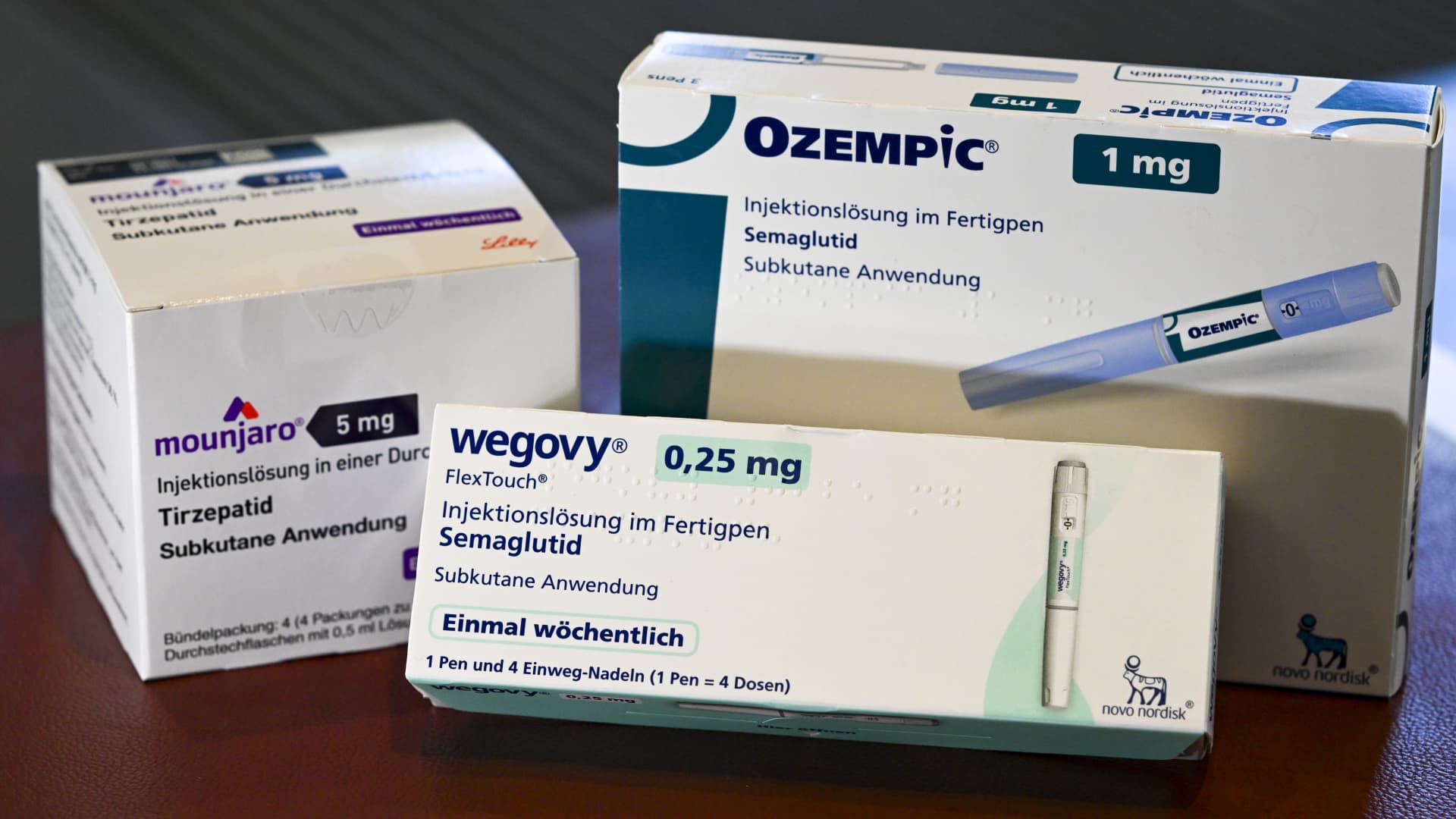Wegovy, Ozepic and Mounjaro Packages.
Picture Alliance | Ghetto images
The increasing demand for diabetes and weight loss drugs such as Mounjaro, Ozepic and Wegovy helped to nourish higher health costs for big employers. For many, the big question is whether the valuable drugs known as GLP-1 will be paid by improving workers’ health and reducing overall health costs over time. AON analysts say this is already happening.
“We’ve never seen anything like that,” said Greg Case, CEO of AonThe employer’s services company benefits. “There is a 44% decrease in major cardiovascular problems. There is a significant reduction in osteoporosis. There is a significant reduction in pneumonia from many species.”
AON researchers have found that within two years, improved health results for patients taking GLP-1 medicines bend the medical care curve for them and their employers. However, getting to these savings requires high preliminary costs.
GLP-1s come at a list price of over $ 1,000 a dose. As broader approval for drugs encourages more demand, it also leads to employer’s drug costs to jump. Since 2023, GLP-1 has increased costs by tempo than specialized high-price drugs that include expensive cancer and autoimmune treatments, According to analysis by Evernorth, division of CignaS
AON analyzers have examined the data on medical claims for 139,000 US employer healthcare workers who have taken GLP-1 medicines between 2022 and 2024. In addition to the cost of medicines, the study found that patients with GLP-1 tend to take higher medical expenses during their first year of medication, such as more medication for a doctor to visit more Sleep apnea and azophagic conditions, such as acid acids.
“The increase is increasing in the first 12 to 15 months,” Case said. “They receive medicines for things that are actually a basic conditions (for obesity).”
But by the end of the second year of GLP-1 drug treatment, the total health care for patients taking them fell by an average of 7%compared to workers with similar chronic conditions and obesity characteristics that did not take the medicines, AON found. For patients with GLP-1 who maintain strict adherence to the drug, savings are up to 13%.
The largest engine of these savings was a reduction by more than 40% of major adverse cardiac events such as heart attacks and strokes, compared to patients who do not take medication, as well as a decrease in the onset of diabetes.
The case with this data, AON has been able to help customers understand the timeline to see a return on providing insurance coverage for GLP-1 for weight loss, in addition to type 2 diabetes.
“We saw every place where the price is decreasing – and it’s stunning,” Case said. “You can do this in a way that has a return on investment, which will literally be an economic return.”
Following its research, AON launched a subsidized GLP-1 Weight Management Program for its own workforce in the United States, which includes weekly virtual visits to wellness and home blood tests to help employees stick to the regimen of the medicine.
The company will present the full results of its study at the Milken Institute’s Global Conference on Monday.
